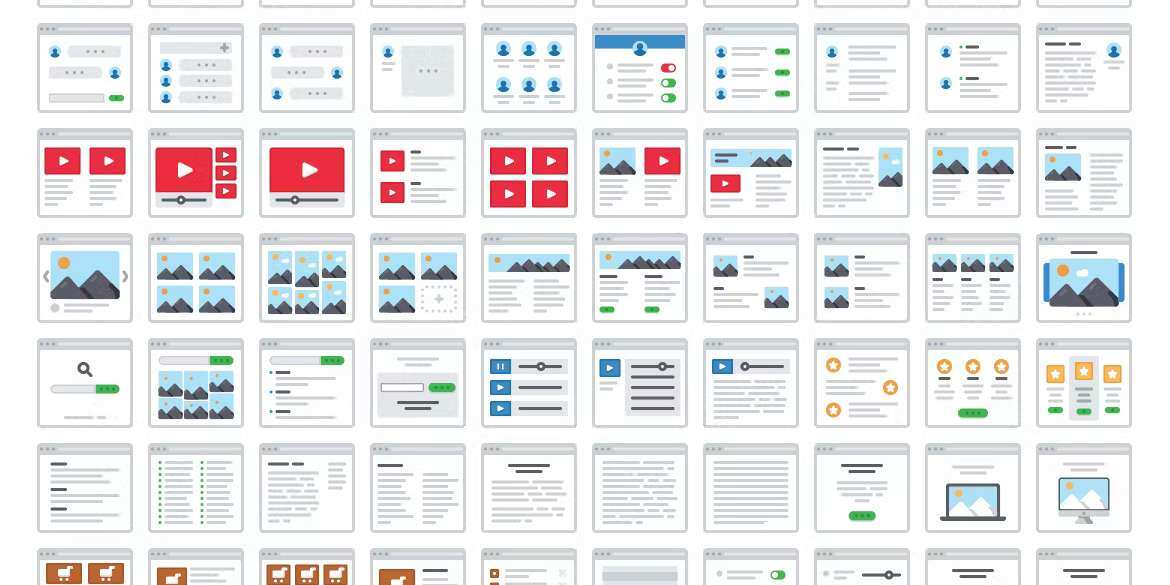Many business owners don’t fully appreciate the need for an optimised digital presence. In many cases, they thought about it once and spent money on a website that brings them no business and hasn’t been updated for months (if ever). This is a big myth that surrounds web design. You can build it, but they won’t come…until you make it happen. No, I’m not talking about black hat SEO or any trickery. You need to put the work into a website to reap the benefits.
It’s understandable that people become jaded towards their websites when their initial foray into web design didn't turn out so well. The problem is that nowadays, people spend a lot of time making buying decisions. They research goods and services heavily, and their expectations are high, so of course, they turn straight to Google and spend hours pouring over their options.
Lots have been said about changes in consumer behaviour, that ‘millennials’ shop differently to others and that everyone needs to cater toward the digitally savvy in order to stay relevant. I’m not so sure that consumer desires differ much more now than they did 30 years ago. We all want the best deal and tend to favour those brands that we already have bought from.
The thing that has changed more recently is the sheer amount of choice. Lots of choice means lots of competition and makes it even harder to get your message noticed by your target audience. It’s also led to many of us experiencing paralysis when presented with overwhelming amounts of choice, as Barry Schwartz states in ‘The Paradox of Choice.’ What is perhaps most interesting is that what he wrote a decade ago has only become relevant.
How can inbound marketing help you reach people?
The ‘Fauxsumerism’ trend pretty much just equates to digital window shopping, and like it or not, people invest lots of time shopping online and not just shopping, but laboriously researching. For some, it’s a pleasurable activity, filling up the shopping cart with no intention of buying. For others, the experience of being presented with so much choice can be paralysing and anxious. The proliferation of technology has made things constantly fight for our attention, more so now than ever before. So enter inbound marketing, which makes it easier for interested prospects to find you, giving you the chance to nurture them into customers.
Inbound marketing is perfect for items that are heavily researched before purchasing. You will gain many more website visitors by producing informative, helpful or entertaining content and optimising it for people’s searches.
But then what? How do you convert these prospects into customers? Do you even have a website that looks professional, offers a good experience for users and lends itself to inbound and marketing automation? Well, in this article, you’ll find out how the adage "build it, and they will come" is only true if you're creating content and targeting your perfect customers.
Build it
The first step of inbound marketing is ensuring that your website is top-notch, not just in terms of front-end design (what visitors see) but in the technical stuff behind the scenes.
Creating a website with a CMS, such as WordPress, allows you to host your website and have your URL while managing your website content effectively. A wide range of plugins can also help with SEO (search engine optimisation), content scheduling, security, website performance and many other things. Inbound marketing requires a frequently updated and optimised website. You will also find integrating marketing automation lends itself to CMS websites.
An awareness of current web design standards and how your visitors will navigate is very useful. You want to simplify and document the journey a visitor goes through when they arrive at your site and how you get them to convert from a piece of content and capture data. User experience (UX) is a hot buzzword, but ensuring that your visitors (and, don't forget – potential customers) have an easy time navigating and finding what their after is essential to engaging with them.
A good website will make adding keywords a breeze, and since we’re building a lead generation machine here, the importance of keyword/SEO optimisation cannot be overstated. People must be able to find you. Yet, this is an area that is often lacking in websites. Don’t lose sight of the asset you’re trying to create, and avoid falling into the ‘any website is better than no website’ mentality.
Inbound marketing (and Google’s search algorithm) love social media and sharing content. Make it easy for visitors to post your content on the web. It isn’t just content that you’ll want to encourage people to share. Landing pages and offers must be available to be shared, too.
More and more businesses are recognising the impact of good design on revenue. Unsurprisingly, many of the world's top brands are also design leaders. Design should be a part of a business’s culture, as design is about making things work well, not just looking good.
Good branding and web design not only make people want to engage with your business but it directly reflects the quality of your products or services. If a bank had a shoddy website, would you be convinced to hand them your money?
Tip: You can read more of my posts about good web design here.
You’ve got a website. Now what?
Now you’ve got a website that suits your business; customers will start rolling in, right? Doubtful.
Many people have bad experiences with their digital presence because they think a good website is all it takes. Unfortunately for them, the real work in getting increased web traffic and converting those prospects into paying customers has only just begun.
Why would someone visit your website? They have a problem or a question, they Google it, and they find your website. Hopefully, that will answer their question. But if all you have on your site is information on your products, every visitor will leave, except the slight few that are already ready to make a purchase.
How inbound marketing is so different from traditional forms of marketing is that you rely on prospects finding you organically, as opposed to just throwing your message at them and bothering them. The prospect initiates An inbound sale when they start visiting your website, viewing your content and learning more about their problem or how your products/services can help them. “The sales process has already started, and you're not a part of it yet.
You need to set smart goals and use data from your previous website or industry benchmarks to ensure that these goals are realistic. Google analytics can help you to gauge the performance of your website.
If you’ve created a blog, which we strongly advise you do, keep it updated regularly. Google will penalise your ranking if you post every week and suddenly drop off. But it’s not just about frequency, but about inbound and outbound links as well as social sharing. This is why you must consider social media integration when designing your website.
Data analysis is a frequently overlooked aspect but businesses must drill down into what generates interest and what causes reduced engagement. If you’re getting more conversions from educational content targeting people at the start of the buyers' journey than other content, maybe you need to revise your approach. A/B test content: if it causes a lead drop, perhaps something else is needed.
A common thing we hear is “my website gets lots of visitors but I can’t seem to convert them into leads or customers.” In this case, we usually look at a few different things. Are there prominent calls to action on the pages? Is the gated content valuable enough to warrant filling out forms? Sometimes a form for a piece of content asks far too much information, causing the prospect to choose to leave.
Tip: Schedule time to review what about your site performs well, and try to improve things that underperform.
A website is never completed
There are many factors to consider, which is why a website is never done. It is a constantly evolving entity. Don’t be fooled into thinking that a well-designed and beautiful website will lead to exponential increases in revenue overnight. Only by keeping interest alive and nurturing visitors and prospects through your sales funnel will you see a return on your investment. But as with anything, you get out of it what you put in.
It’s all too easy to forget that every page visitor's name on a mailing list is an actual person. By building a website that doesn’t just sit there but gives your business the tools to drive traffic and convert them into customers, you will see the benefits that your online presence can have. You may rely on outbound campaigns, but going inbound can have up to a 60% reduction in cost per lead.
If you’re thinking about a new website, build it with inbound in mind, and you will see how hard an optimised website can work for you and actually measure its return on your investment.




